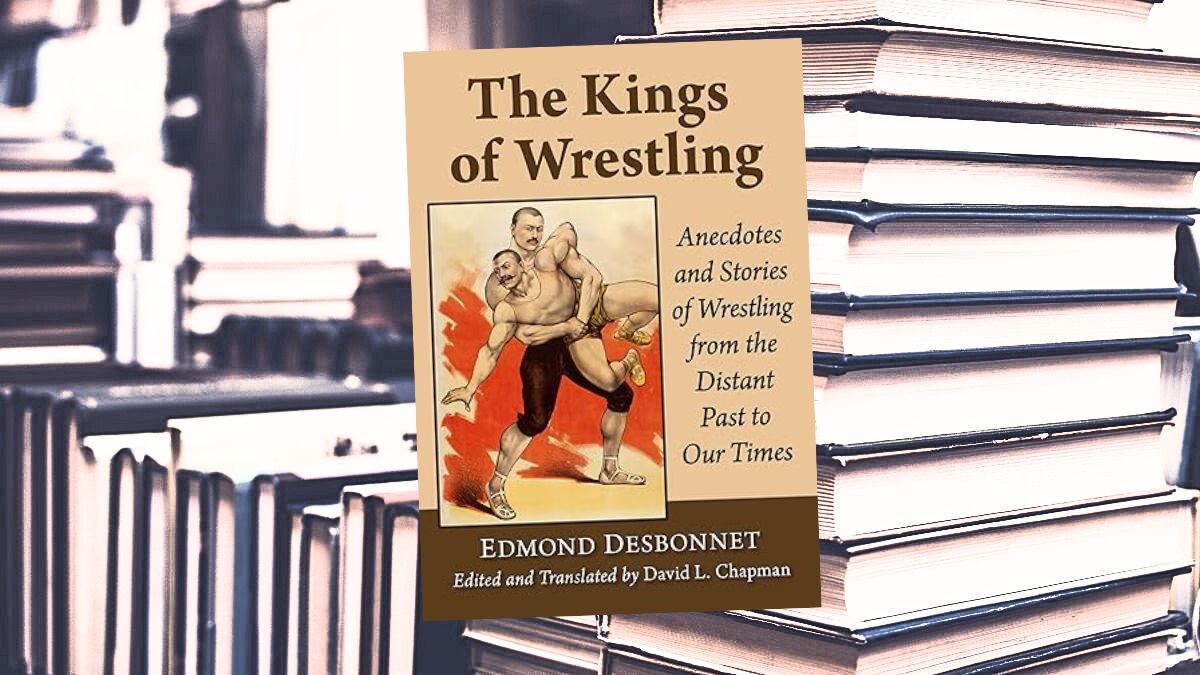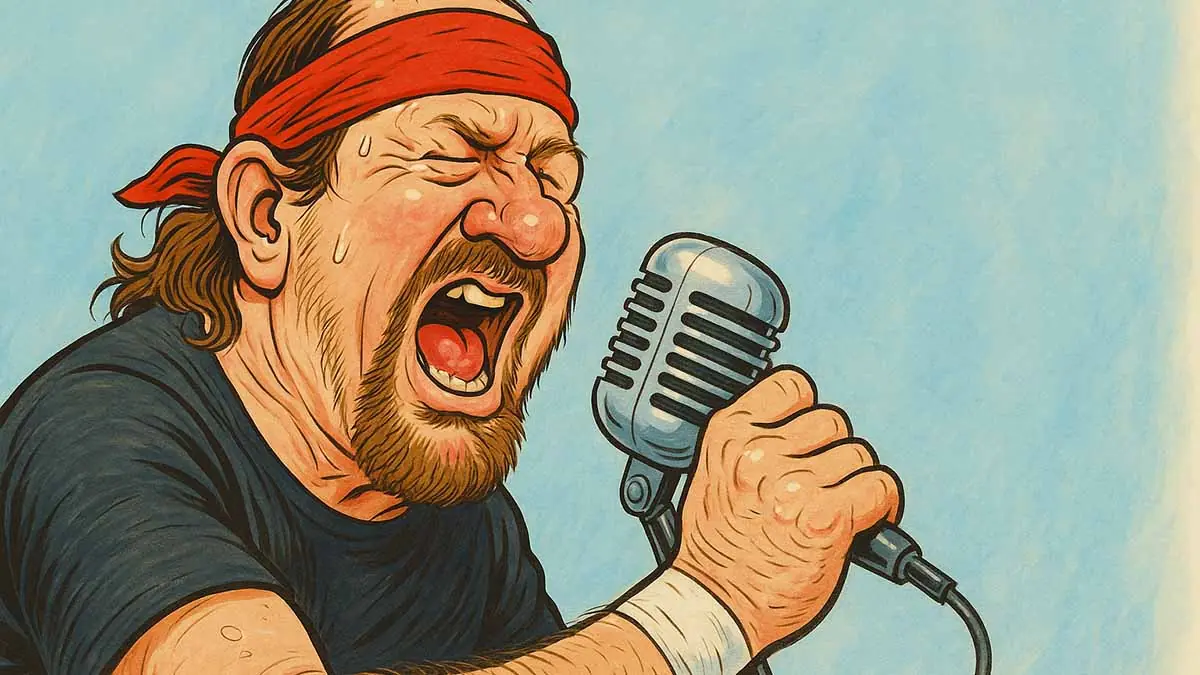The Kings of Wrestling
If your reading goes a little further afield than wrestling history to include ‘aligned’ interests such as strength and physical culture, David L. Chapman’s name should be familiar. Chapman has authored a variety of books, perhaps most famously Sandow the Magnificent: Eugen Sandow and the Beginnings of Bodybuilding (University of Illinois Press, 2014), a biography devoted to the man generally credited with launching popular interest in bodybuilding around the beginning of the 20th century. Chapman also recently translated and annotated Edmond Desbonnet’s Les Rois de la Force (The Kings of Strength), which should be considered the sister volume to Les Rois de la Lutte (The Kings of Wrestling). Both are published through McFarland & Company.
Chapman’s The Kings of Wrestling is the first English-language version of Desbonnet’s work, which was originally published in 1910. Desbonnet was a longtime wrestling fan and his book contains biographical sketches and remembrances of European wrestlers, especially those who appeared on the mat in his native France. More than just a translation of the original manuscript, Chapman’s new book offers a lengthy introduction as well as a series of detailed explanatory endnotes to accompany each of Desbonnet’s chapters. While Desbonnet’s original clocked in at 190 pages (not including back matter advertisements for fitness courses and gadgets), the new English-language version of the book is considerably larger. It includes almost a dozen additional historical documents from around the same period as Le Rois de la Lutte’s release as appendices. These, too, are translated and annotated, and help to further flesh out the story of wrestling on the European Continent more than century ago. While all of them are insightful, perhaps the most interesting of them is an excerpt from Paul Pons’ Wrestling, which builds on information Chapman provides in the introduction around match fixing, to provide a justification for ‘working’ wrestling exhibitions.
By his own admission, Chapman does not have a long pedigree in researching wrestling history. However, given his background in physical culture, he is particularly well suited to the role of translating and annotating Desbonnet’s works. While Desbonnet had a lifelong interest in wrestling history, he was foremost an expert on physical training and the human physique. Similar to America’s David P. Willoughby, who he preceded by several decades, Desbonnet was fascinated with physical proportions, and analyses of bodily measurements and commentary on athletes’ physical attributes infuse much of his writing. In translating his work, Chapman therefore “gets” Desbonnet in a way that the wrestling specialist may not — and this shows in Chapman’s well written introduction, which for example, includes a unique analysis of the evolution of physiques among wrestlers over the decades covered by Desbonnet’s book.
Although an admitted non-specialist in wrestling, Chapman is also clearly a quick study. The annotations he provides for each chapter add richly to Desbonnet’s biographical profiles by making use of the wide range of archival sources that were simply not available at the time of the book’s original release. Many of them are incredibly detailed and add colour and depth to the characters who inhabited the sport. In some instances, minor additions are also made to the main text to clarify dates such as births and deaths, where Desbonnet did not have them.
A comparison of the original and translated versions of the book reveals that Chapman is a thoughtful editor. Translation is a difficult art, and a verbatim approach often results in a loss of style, if not substance, from the original. Fortunately, Chapman captures much of the flair of Desbonnet’s prose, including his liberal use of superlatives in describing the athletes he profiles.
The 1910 edition also included a large number of photographs. In this instance, Chapman elected not to reproduce the original photographs as they appeared in the book. While a substantial number of them are the same, many are not. In populating the book with pictures, Chapman drew extensively on the collections of Michael Murphy and Christian Gaildraud, two of the world’s leading collectors of vintage wrestling and physical culture images. The number of photos in the two versions of the book are fairly similar, with Chapman slightly edging out Desbonnet’s original, thanks in part to the images accompanying the appendices.
In most cases, older images are replaced with new ones of superior quality. Yet, there are a few cases where athletes profiled in Desbonnet’s book, such as Eugene Paz, who was instrumental to the early history of Greco-Roman wrestling, do not have photos in Chapman’s. Also, most of the group photographs of wrestlers in the original, often taken in conjunction with wrestling tournaments, are absent.
There are cases where the exclusion of photos amount to missed opportunities. One instance that stands out in this respect concerns Jean-Pierre Montastruc, perhaps the first in a line of French wrestlers, including Maurice “The French Angel” Tillet and Andre “The Giant” Roussimoff, who were afflicted with acromegaly. While Chapman does include the same photograph of Montastruc as Desbonnet, he does not include Desbonnet’s image of Montastruc’s hand beside “an ordinary man” (reviewer’s translation). Given the Desbonnet’s fascination with anthropometry (the study of human measurements and proportions), the picture’s inclusion, even if the reproduction was of inferior quality, would have been in keeping with the spirit of the original text.
Leaving aside what could be considered minor quibbles, in translating and annotating Les Rois de la Lutte into The Kings of Wrestling, Chapman has done a great service for the wrestling community. His book represents a welcome addition to a small body of publications, foremost among them Steve Yohe and Scott Teal’s 2019 re-release of Marcus Griffin’s Fall Guys: The Barnums of Bounce (1937), which introduce new audiences to older essential texts on the sport, with the added benefit of up-to-date research. Chapman’s book should find a receptive audience with wrestling fans who are interested in the early history of professional Greco-Roman wrestling. It will also have considerable crossover appeal with academics because of the attention he gives to the “broader picture” of the sport. Chapman’s additions to Desbonnet’s original manuscript not only add to the stories of the wrestlers, but also contextualize wrestling’s growth within the political framework of post-Revolutionary France and provide a psycho-social examination of its popularity. It is therefore expected that the book will appear in the review sections of academic journals, in addition to being featured on leading online wrestling sites such as SlamWrestling.net.
The Kings of Wrestling is a valuable addition to the English language canon of wrestling history and opens up the promise of expanding knowledge of the sport beyond the narrow perspectives that are offered through only studying Anglo-American texts. Moving forward, it will find itself in frequent transit between my desk and book shelf. Hopefully it will also inspire more historians to undertake the laborious work of translating and annotating other classical works on wrestling for English-speaking audiences, among them Heikki Lehmusto’s Painin Historia (Finnish) and Atif Kahraman’s Cumhuriyete Kadar Türk Güreşi (Turkish).




